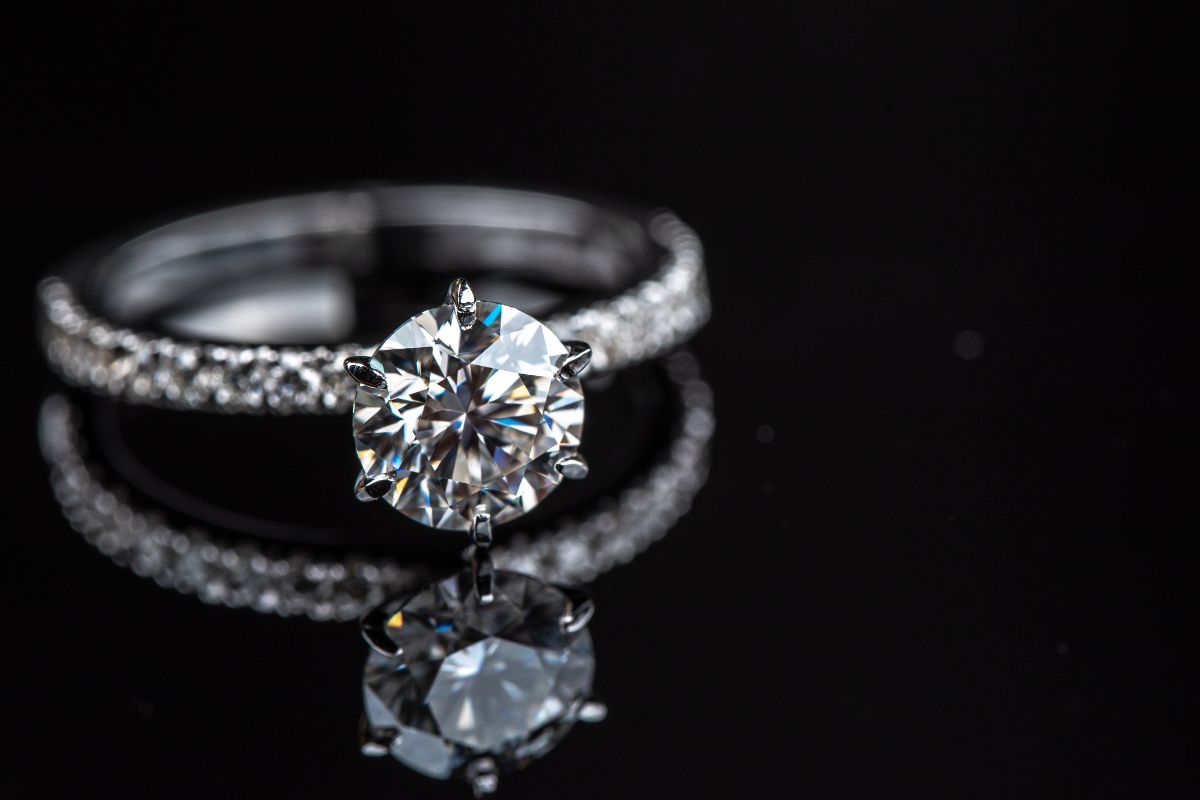Moissanite, a gemstone that has gained considerable popularity in recent years, is often praised for its stunning beauty and ethical credentials. Composed of silicon carbide (SiC), this lab-created gem was initially discovered in 1893 by the French scientist Henri Moissan, who found it in a meteorite crater in Arizona. While natural moissanite is extremely rare, synthetic versions have become readily available, offering a compelling alternative to traditional diamonds.
Composition and Characteristics of Moissanite
The primary composition of moissanite is silicon carbide, which gives it remarkable hardness and brilliance. On the Mohs scale, moissanita que es scores between 9.25 and 9.5, making it one of the hardest substances available, just below diamond, which ranks a perfect 10. This hardness makes moissanite exceptionally durable for everyday wear in jewelry, particularly in engagement rings.
One of the most captivating features of moissanite is its high refractive index, which ranges from 2.65 to 2.69. This quality allows moissanite to reflect and refract light more effectively than diamonds, resulting in a unique brilliance and “fire” — a term used to describe the colorful flashes of light that occur as a gemstone moves. In fact, moissanite’s dispersion rate is higher than that of diamond, which means it can exhibit more rainbow-like colors when light passes through it(
Environmental and Ethical Considerations
In an era where consumers are increasingly conscious of the ethical implications of their purchases, moissanite presents a responsible choice. Unlike diamonds, which can be associated with environmental degradation and human rights violations, lab-created moissanite has a significantly lower ecological footprint. Its production occurs in controlled environments, which minimizes environmental impact and ensures ethical labor practices.
Moreover, the rise of “conflict diamonds” — stones mined in war zones and sold to finance armed conflict — has raised awareness and concern among consumers. By choosing moissanite, individuals can avoid contributing to this issue while still enjoying a beautiful gemstone(
Cost-Effectiveness of Moissanite
Another reason for moissanite’s popularity is its affordability. While diamond prices can be exorbitant due to their perceived rarity and the costs associated with mining, moissanite offers a more budget-friendly option. A high-quality moissanite gemstone can cost 30% to 50% less than a diamond of similar size and appearance, making it an attractive option for budget-conscious consumers without sacrificing beauty or quality(
This cost-effectiveness has made moissanite a popular choice for engagement rings and other fine jewelry pieces. Many couples opt for moissanite as a way to have a stunning and luxurious-looking gemstone without breaking the bank. Additionally, moissanite’s durability means that it will withstand daily wear, making it practical for those who lead active lifestyles(
Varieties and Customization
Moissanite is available in a range of shapes and sizes, allowing for extensive customization in jewelry design. Whether one prefers classic round cuts, elegant princess cuts, or unique fancy shapes, moissanite can be tailored to fit personal preferences and styles. This versatility is a significant draw for consumers looking to create a unique piece of jewelry.
Many manufacturers also offer various color options, with the most popular being colorless, near-colorless, and faint yellow or gray. The ability to choose from a variety of colors further enhances the appeal of moissanite, as it allows consumers to personalize their jewelry while maintaining ethical and environmental considerations(
The Growing Popularity of Moissanite
As awareness of sustainable and ethical practices grows, so does the acceptance and demand for moissanite in the jewelry market. A growing number of jewelers are incorporating moissanite into their collections, catering to a demographic that values both beauty and ethics. The market for moissanite has expanded not only among young couples looking for engagement rings but also among those purchasing other types of jewelry, such as earrings, necklaces, and bracelets.
The social media influence, particularly on platforms like Instagram and Pinterest, has also played a significant role in promoting moissanite. As influencers showcase their moissanite rings and educate their followers about the benefits, more consumers are discovering this beautiful alternative to diamonds(
Conclusion
In conclusion, moissanite stands out as a brilliant alternative to traditional lab grown diamonds. Its impressive hardness, striking brilliance, and ethical production methods make it a compelling choice for consumers seeking a sustainable and cost-effective gemstone. With its growing popularity, moissanite is paving the way for a new standard in the jewelry market — one that values beauty, responsibility, and individuality. Whether for an engagement ring, a special gift, or a personal treat, moissanite offers a dazzling option that combines elegance with ethical considerations.
For further insights into moissanite, including specific buying guides and product recommendations, you can explore various online resources and retailers specializing in lab-created gemstones.




